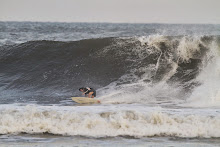
Last day of Sabbatical
So, just to catch you up. Two weeks ago we had a splendid “dock party” for Siwash. Here’s her cake made by the most wonderful bakers at Angel Maid in Culver City.
It was all very festive, and yet sad. We were at the dock that used to belong to my Mom and Dad, but that is now for sale. Everything is in flux. And yet somehow, all those present felt a palpable comfort in being able to gather and muse about this old boat that survives everyone.
Science is starting to ascend through all the bubbly stuff of life, as it reliably does. Unanswered questions on several fronts still titillate my students and me.
Here’s a cool one. Kind of a research update from the weeks we spent on Catalina Island last Fall.
Remember, if you will, that our hypothesis to explain the value of sensitization, the increase in defensive behaviors that we observe in sea hares following a lobster attack, is that this hypersensitivity helps protect the sea hare from future attack. By the way, we got the original research, showing sensitization after lobster attack, published in a cool, highly visible journal, the Journal of Neuroscience.
http://www.jneurosci.org/cgi/content/abstract/30/33/11028?etoc
To me, this paper was fairly straightforward. Entice lobsters to attack sea hares. Separate them before too much damage is done, and then test the sea hares for enhanced reflex withdrawal. No big deal, really.
But this paper has made more of splash than I ever thought possible. Lots of folks emailed me to congratulate us. The paper may get mentioned in other journals as a “hot” paper. Pretty cool. The best part is that the research was performed by so many students over several years.
Ok. But showing sensitization still doesn’t answer the question of what good it does for sea hares! Does it really help sea hares protect themselves from future attacks? Well, Dan and John and I went back out to Catalina Island a few weeks ago and actually tested this hypothesis!
We put out the same enclosure cages we used before. Then we went back to the lab and marked sea hares with little plastic tags. Then we gave half of the sea hares “standard” electric shock treatment to induce sensitization. Then we planted sensitized and naïve animals in a cage. Finally we did our usual dive protocol with bait sea hares in order to identify attacking lobsters. We planted a hungry lobster in each of the two cages, and checked back in the next day to see which sea hares the lobsters preferred. We hypothesized that the naive sea hares would be preferred because they were not pre-sensitized.
As so often happens in science, our hypothesis got roundly defeated. Every one of the 5 lobsters that ate 1 or two sea hares consumed ONLY the SENSITIZED ones. Previous sensitizing attack seems to make sea hares more, not less, vulnerable to subsequent attack.
Now dear readers, you can email me or post ideas to explain these results. Clearly this professor has no clue what good sensitization is doing these slugs!
On this note, we end the sabbatical. Perhaps I’ll continue with the Wright lab’s research adventures, but we shall see.
Thanks for reading this stuff. Writing about research and life clears my head in ways I still don’t really understand.

Did the caged sea hares have hiding places from the attacking lobsters? Could there be any chemical information being given to lobsters regarding sensitized sea hares? Just wondering if a sensitized animal may alter its behavior more quickly than a naive animal by "running"... sliding away to hide (to argue for an adaptive explanation). But, if an exposed sensitized animal gives info to a would-be predator that expresses vulnerability, that animal may be more "visible" to the predator if there's no place to hide (the tradeoff to the benefit of an adaptive trait).
ReplyDeletejust thinking aloud...
Julie, a grad student who randomly came across your blog a while back and enjoyed your writing. I know a little about sea hares but study social behavior in an Argentine rodent.
Julie. You're the first one to ask that. Yes we put in lots of big rocks, creating all kinds of concavities. Yet virtually every sea hare, even the pre-shocked ones preferred the roof of the cave.
ReplyDeleteI see Eileen Lacy almost every year at the Winter Animal Behavior Conference. Those tucos are CRAZY!
BW
just got back from 2 months with eileen and those crazy tucos in argentina... crazy is too nice a word! that's cool that you know eileen. small world. i am a big fan of sji and spend every summer kayaking with those black and white critters, my other love. indirectly, it led me to your sabbatical blog, which i only discovered when you were almost done. hope life (and research) back in the real world is going well!
ReplyDelete